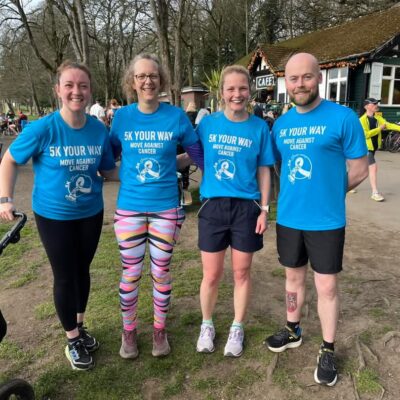Greyhound racing remains popular in Sheffield despite national efforts by animal charities to bring an end to the sport.
John Marriott of Rotherham, who has been competing for 40 years, turned away from the industry last October.
Despite his love for greyhounds, he said: “The racing I fell in love with is no longer the racing of today.
“When I started, tracks were limited. Nowadays there’s five races a week, every week. With twice the amount of racing, it wears you down.
“Whatever the bookmakers want, they get.”
He added: “Many people are unwilling to talk about the issues in the sport, and unless you admit there’s a problem, you can’t move on from it.”
In 2022, Blue Cross animal charity teamed up with Dogs Trust and the RSPCA, campaigning for a five year ‘phase out’ of the sport.
Blue Cross has said that the greyhound racing industry has ignored welfare advice and continues to exploit dogs.
British industry figures found more than 22,000 injuries were suffered by greyhounds in the industry between 2018 and 2022.
More than 2,300 greyhounds died.
Blue Cross hopes to ban racing in the next five years and currently has a petition circulating in hopes of bringing an end to the sport.
Being one of just 20 registered tracks left in England and Wales, Sheffield’s Owlerton Stadium has been a particular hotspot for animal activists.
Rosalind Porter, 58, travelled from North East England last February to protest at Owlerton, coinciding with the Greyhound Board of Great Britain’s first celebratory dinner since the pandemic.
She called the organisation the sport’s “so-called governing body”.
She said: “We wanted to show them that we were still around.”

Rosalind – who been protesting since 2018 – was a coordinator for the Sheffield protest. She was accompanied by roughly 30 members of the activism group Alliance Against Greyhound Racing, which has a shared mission to end animal abuse in greyhound racing.
She said: “We have been threatened with violence and verbally abused at protests by pro-racers including trainers. Now one of us will always wear a body-camera.”
Despite these threats, Rosalind still advocates for change and awareness.
“We frequently find that people are blissfully unaware of the cruelty behind greyhound racing.”
She spoke gravely on her knowledge of the industry and it’s grim realities. She said a dog can be euthanised at the track for very treatable injuries – such as a broken leg – as it’s ‘not economical’ for trainers to spend money on vet fees.
“Hence the regulation every stadium must have a freezer to store the dead dogs in.”
Another active individual on the anti-racing scene is Dr Moe Kaur, a 55 year old retired doctor from Manchester.
Another of the demonstrators present at the Sheffield protest, she has been involved in greyhound activism since adopting her first greyhound JoJo in 2014.
Though JoJo was never a racing dog, Moe says it is because of her that she started campaigning.
She said: “Dogs as gentle and loving as JoJo were being killed because of the gambling industry – which is what greyhound racing is. It serves no purpose other than to supply over 130 races a day in the UK.”
Moe said that the industry discards over 6,000 greyhounds every year, expecting the public to pick up after them. This is despite the lack of homes available for the constant stream of dogs. Moe described the injuries greyhounds can suffer when racing.
She said: “The stress on the bones at the bends destroys the structural integrity of the bones and soft tissues – resulting in stress fractures at specific points not seen in other breeds of dogs.”
She said the industry will never be able to decrease the number of injuries because they are a direct result of repetitive racing on oval tracks which she said leads to many greyhounds going through life-long pain.
Moe rescued two greyhounds, named Sonia and Emily, from China in an international anti-racing campaign in 2019.
“Since it’s opening in the 1960’s it is estimated over 18,000 greyhounds were killed there. If they did not finish in the top 3 in consecutive races they were simply killed, there was no homing of them at all. The greyhound racing community knew this and did nothing.”
Eleven year old Sonia died after spending only several weeks in the UK.
Emily, who was six when she was rescued, was described by volunteers as being ‘very shut down’ when she was in Macau.
“It took months for her to realise we were talking to her, a year to be comfortable here and over two years for her to be her true self, feel safe and understand affection and cuddles.
“Emily has evidence of racing injuries on all her legs, suffers from arthritis in all her legs due to this. There’s scars all over her body.”
Despite valiant animal welfare efforts, many still contribute to greyhound racing.
A man who has been attending races for over 40 years and wished to remain anonymous, spoke to us as he was attending the Sheffield track Friday for his birthday.
However, he admitted his awareness to issues within the sport.
He said: “The problem is when a dog stops performing. There’s a problem with abuse…it can happen… I’m aware that dogs have been put away when they stop delivering.”
Activists like Rosalind and Moe continue to spread awareness for the animals they love, and urge public involvement through local groups and interaction with the Blue Cross petition.
GBGB has denied the accusations of animal abuse by animal activist campaigns, responding in an official statement: “Welfare standards in licensed greyhound racing have improved dramatically over the past four years.”
It also said it has built on this through a long term strategy called A Good Life for Every Greyhound.
It also accused campaigners of ‘quoting data that is inaccurate, making claims that do not stand up to challenge and trying to galvanise support’.





